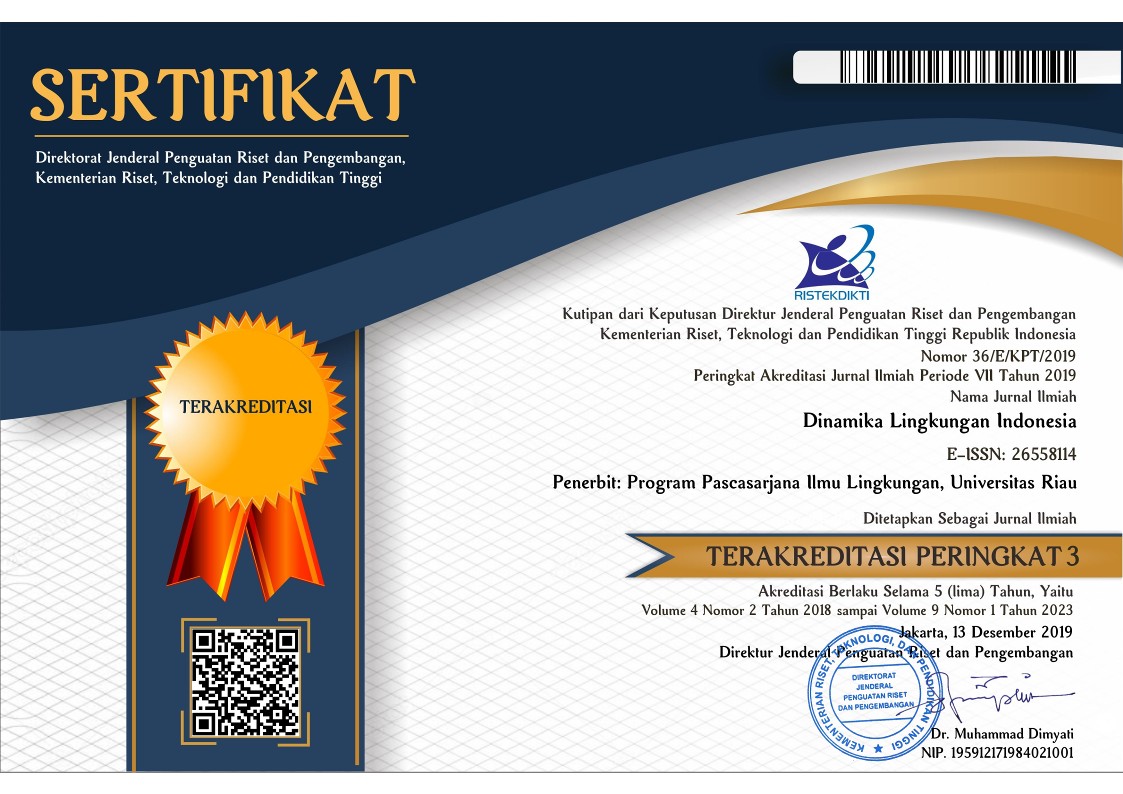Rancangan ruang bermain anak yang kreatif dan edukatif dengan pemanfaatan lahan fasilitas umum
Abstract
Keywords
Full Text:
PDFReferences
Asy’ari, M. Y. (2008) .Peraturan Menteri Negara Perumahan Rakyat RI No. 32/PERMEN/M/2006. Journal of Chemical Information and Modeling, 53(9), 287. https://doi.org/10.1017/CBO9781107415324.004.
Ardiyanto, A. (2017). Bermain Sebagai Sarana Pengembangan Kreativitas Anak Usia Dini. Jendela Olahraga, 2(2), 35–39. https://doi.org/10.26877/jo.v2i2.1700.
Badan Standardisasi Nasional. (2004). SNI 03-1733-2004 : Tata cara perencanaan lingkungan perumahan.
Baskara, M. (2011). The Principle of Design Control. Lanskap Indonesia, 3(1), 27–34.
Elfiadi. (2016). Bermain dan Permainan Bagi Anak Usia Dini. VII(1), 51–60
Eliasa, E.I. (1988). Pentingnya Bermain Bagi Anak Usia Dini Oleh : Eva Imania Eliasa, M.Pd. Staf Pengajar Program Studi Psikologi Pendidikan dan Bimbingan FIP UNY.
Hutapea, C. R. (2015). Taman Bermain Anak Dengan Penekanan Aspek Keamanan Dan Kenyamanan Di Tarekot Malang. Jurnal Mahasiswa Jurusan Arsitektur, 1(3), 2.
Ishak, R. A., Wikantari, R., & Amri, N. (2018). Implementasi Perencanaan Ruang Bermain Anak yang Kreatif dan Edukatif di Kelurahan Cambaya Kota Makassar. TEPAT Jurnal Teknologi Terapan Untuk Pengabdian Masyarakat, 1, 169–178.
Martana, M.T. (2006). Problematika Penerapan Metode Field Research Untuk Penelitian Arsitektur Vernakular Di Indonesia. DIMENSI (Jurnal Teknik Arsitektur), 34(1), 59–66. Retrieved from http://puslit2.petra.ac.id/ejournal/index.php/ars/article/view/16458.
Saragih, J.F.B., (2012). Makna Spasial Bermain Pada Anak yang TInggal di Kawasan Permukiman Padat di Jakarta (Spatial Meaning of Play on Children Living at the Dense Settlement Area in Jakarta). Psychology Applied to Work: An Introduction to Industrial and Organizational Psychology, Tenth Edition Paul, 53(9), 1689–1699. https://doi.org/10.1017/CBO9781107415324.00.
Widyawati, V. (2015). Penilaian Ruang Bermain Anak Di Kota Depok,” vol. 8, no. 3, pp. 195–207.
UU No 35 Tahun 2014. (2014). Undang-Undang No 35 tahun 2014 Tentang Perlindungan anak. Cell, 3 (4),1–15. ttps://doi.org/10.1016/j.cell.2009.01.043 https://www.kemenpppa.go.id/index.php/page/read/29/2364/kemen-pppa-penuhi-hak-bermain-anak-melalui-rbra.11 Oktober 2019.
DOI: http://dx.doi.org/10.31258/dli.7.2.p.111-115
Refbacks
- There are currently no refbacks.





